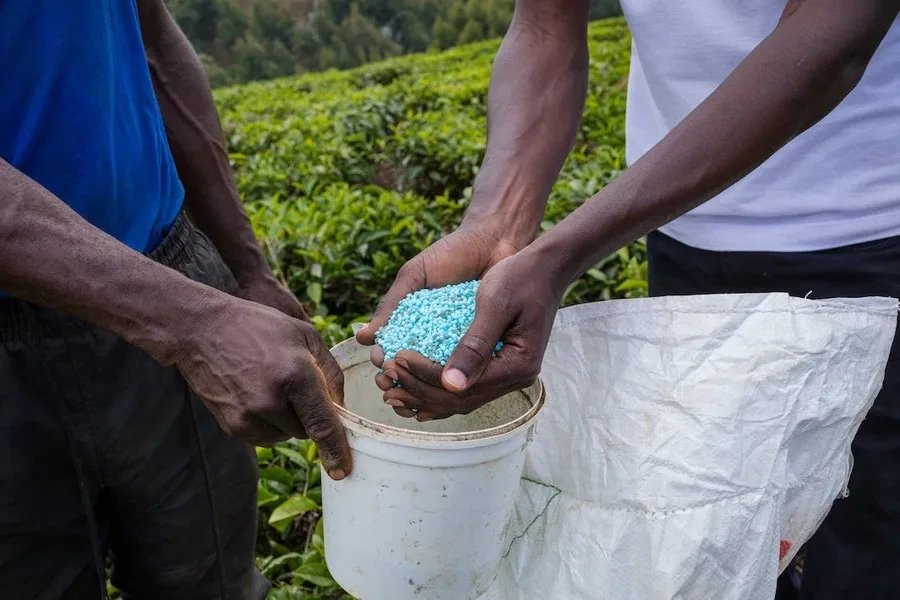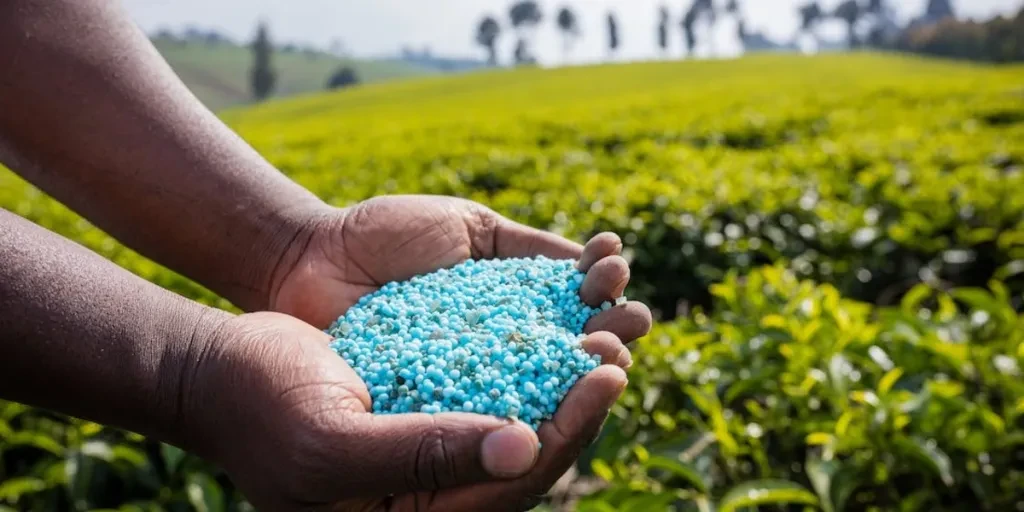The world is currently facing a significant food crisis threat. Approximately 345 million people are experiencing high food insecurity levels in 2023, more than double the number in 2020. This food crisis can be associated with various factors, such as global climate change, conflicts, droughts, and high fertilizer and energy prices.
The high number of people affected by the food crisis calls for practical solutions, such as increased fertilizer manufacturing. Fertilizers provide crops with the nutrients needed to grow and improve soil fertility and crop yields.
This blog explores the various ways fertilizer manufacturing can help address the food crisis problem.
Table of Contents
An overview of the global food crisis
Ways fertilizer manufacturing can solve the food crisis
Fertilizer manufacturing and usage case studies
Conclusion
An overview of the global food crisis
The World Food Programme (WFP) estimates that 783 million people are facing chronic hunger, an increase of 200 million from 2020. The World Health Organization reports that approximately 29.6% of the global population (about 2.4 billion people) lack access to constant food. More than 3.1 billion people (42% of the worldwide population) cannot afford a healthy diet.
While the food crisis is a global problem, some areas are worse than others. For example, hunger has decreased in Asia and Latin America, although it continues to persist in Africa. One in five people in Africa face hunger, which is twice the global average. Approximately 129,000 people are projected to face famine in various countries, including South Sudan, Mali, Burkina Faso, and Somalia. More than 70% of people affected by hunger live in areas afflicted by war.
Fertilizer effectively improves crop yield and quality
Fertilizers provide crops with necessary nutrients such as nitrogen, phosphorus, and potassium, promoting crop growth and yield. Nitrogen fertilizer is used to improve soil fertility, promote plant growth, enhance photosynthesis, and increase chlorophyll content. Phosphate fertilizer is used to strengthen the plant’s stress resistance, encourage flower bud formation and flowering, make the plant’s stems and branches more resilient, and accelerate the ripening speed of the fruit. Potassium fertilizer is used to make the plant stems stronger, enhance their resistance to disease, insects, and drought, and improve fruit quality. Therefore, fertilizers are an essential means for increasing grain yield.
Ways fertilizer manufacturing can solve the food crisis

The World Bank identifies the skyrocketing and volatile fertilizer prices as a serious threat to food security. Similarly, WFP indicates that the increased fertilizer prices have led to decreased production of maize, rice, soybean, and wheat, which will gradually lead to a food availability crisis. Therefore, reducing fertilizer prices can help mitigate the ongoing global food crisis. This is because decreasing fertilizer prices will enable more farmers to purchase fertilizers, thereby increasing grain production.
How to lower fertilizer prices
Based on the Alfred Marshall supply and demand theory, low fertilizer supply leads to an increase in fertilizer prices. Consequently, high prices reduce farmers’ ability to purchase fertilizers, which limits crops’ access to essential nutrients. This ultimately results in low grain production. Conversely, a high fertilizer supply leads to a decrease in fertilizer prices, which increases farmers’ ability to purchase fertilizers, avails sufficient nutrients for crops, and eventually increases grain production.
Therefore, the large-scale production of fertilizers worldwide may lead to an oversupply of fertilizers, which in turn would lower prices and enable more farmers to be able to purchase them, thereby increasing food production.
Mass producing fertilizers to improve farmers’ access
Various strategies can be adopted to increase fertilizer production and supply and lower the prices, including:
- Countries should incentivize the establishment of small fertilizer factories. This strategic approach reduces the initial investment for fertilizer producers and increases profit margins, thus attracting more investors.
- Adoption of advanced fertilizer production technologies from countries with developed manufacturing industries could be used to accelerate domestic fertilizer manufacturing capacities
- Fertilizer export opportunities to global markets should be explored. This can increase production volumes and revenues and further support domestic production capabilities.
Soil specific fertilizers for higher grain yields
Fertilizers help to supplement naturally occurring nutrients in the soil, making it more fertile. However, nutrient concentration in different regions varies. A study found that warm, arid, and tropical ecosystems, often found in less developed countries, have lower soil micronutrients. Therefore, governments should produce fertilizers tailored to their local soil’s characteristics. For example, countries with hardened soil should produce organic fertilizer to improve soil texture, structure, water-holding capacity, and nutrient capacity.
Fertilizer manufacturing and usage case studies
The current global food crisis requires an urgent solution to increase food production. Each country should invest in research and development to manufacture fertilizers based on their soil’s characteristics. This could involve exploring new formulations, improving nutrient delivery systems, or adopting innovative technologies. Mass fertilizer production could help to reduce fertilizer prices, making them more accessible to farmers and increasing food production.
Are you looking for a manufacturer to help produce soil-specific fertilizer? Henan Lane Heavy Industry Machinery Technology Co., Ltd. offers OEM and ODM production, manufacturing fertilizer based on provided custom product specifications.
Case 1: Indonesian palm silk organic fertilizer production line
In Indonesia, the production of palm oil has increased nearly three-fold in recent decades, with its total production accounting for almost 45% of total world production. As a result, palm plantation and yield have significantly increased as farmers seize the opportunity and the market. However, the increased production has resulted in increased waste from palm fruit oil extraction. The waste occurs in various forms, including palm oil mill effluent (POME), oil palm fronds (OPF), empty fruit bunch (EFB), palm pressed fibers (PPF), oil palm trunks (OPK), and seed shells. These waste materials are produced in the millions of tonnes, causing significant environmental problems.
To mitigate this challenge, the Indonesian government and farmers optimized the idea by turning palm oil waste materials into valuable organic fertilizer. These materials are then used to produce organic fertilizers that help improve soil fertility and soil nutrients, reduce the use of inorganic fertilizers, and enhance crop vigor. Consequently, this practice has increased production and improved sustainable farming practices and development in Indonesia.
Case 2: Turkmenistan’s sulfur-coated urea production line
Turkmenistan’s sulfur-coated urea can slow down the release of fertilizer fertility and provide long-term nutrients throughout the entire plant growth period. Nitrogen is an essential micronutrient needed for crop production and the sustainability of agricultural systems. However, crops recover less than 50% of nitrogen from applied fertilizers, with the rest being lost in the soil. Urea coating is therefore one common practice used to reduce nitrogen losses.
Turkmenistan’s sulfur urea coating involves applying a layer of molten elemental sulfur around the urea. This coating mechanism results in a slow release of the nitrogen, allowing it to stay longer in the soil and meet the crop needs. The resulting coated fertilizer enhances efficient nitrogen use and facilitates yield growth and quality. The reduced nutrient deficiencies improve crop production, indicating the significance of Turkmenistan’s sulfur-coated urea production line in addressing the food crisis.
Conclusion
It’s clear from these examples that there are ways to boost the efficacy of fertilizer usage. The correct method for specific areas and countries will largely depend on their crop needs as well as overall ecological conditions. Once this is established, a fertilizer manufacturer or variety for everyone can be found on Alibaba.com.




